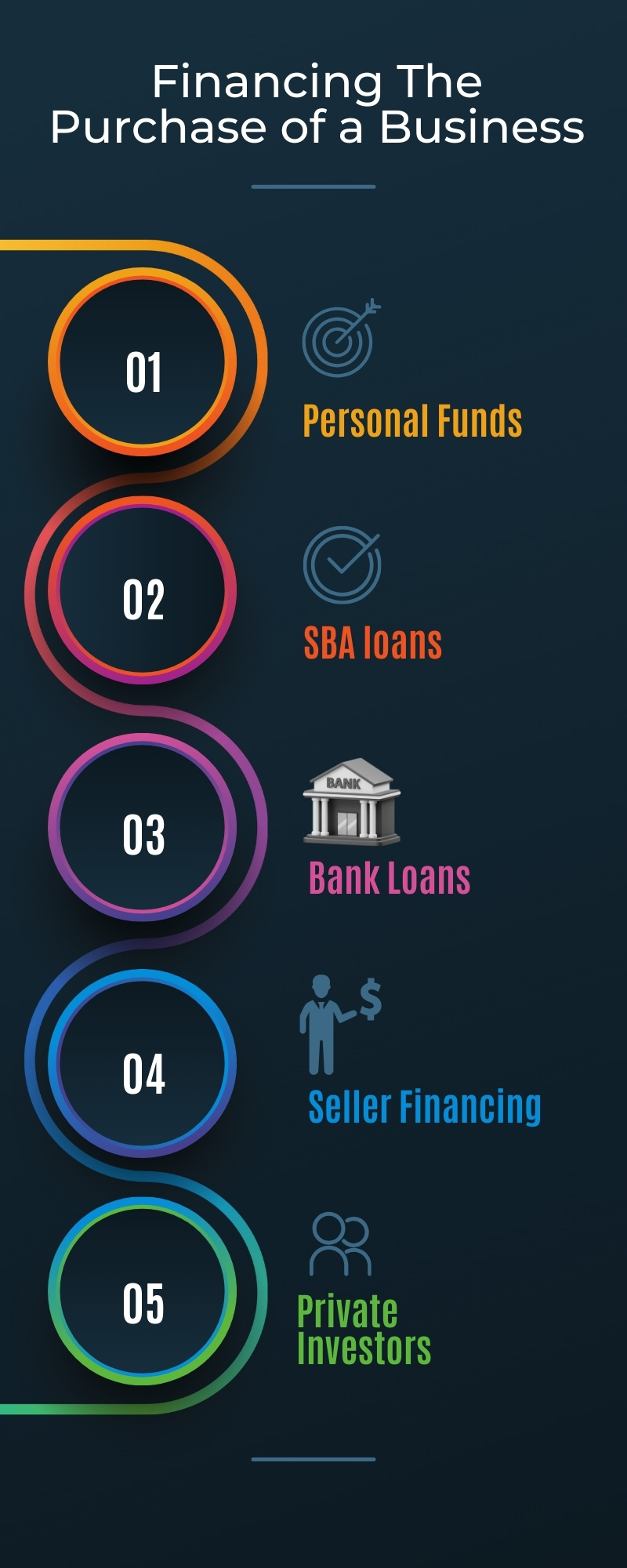Introduction
To buy a small business verses starting a new business from scratch may sound foreign to most aspiring entrepreneurs but it can be a better approach to getting into business if the right business opportunity is researched and matched up with the skills, capital, and ability of the purchasing buyer.
Buy a small business with a proven track record, loyal customers, and working systems and much of the headache that comes with starting a business from the beginning may be avoided.
However, this isn’t something to rush into. Buying a business is a huge decision, and you need to know exactly what you’re doing. This guide will walk you through everything you need to know, from understanding the true value of the business to finally closing the deal.
To Buy a Small Business Makes Sense.

Let’s be real, starting a business from scratch can feel like you’re running through quicksand. The stress of building up customers, developing products, and sorting out operations can take years, and the risk is high. Buy a small business that is already established and you have a head start. Here’s why:
Instant Cash Flow Is Created When You Buy a Small Business
When you buy an existing business, it’s like stepping onto a treadmill that’s already moving. You don’t have to wait months (or even years) for the money to start coming in—it’s already happening. The previous owner has done the hard work of setting up revenue streams, so you can hit the ground running. Of course, all of this must be verified during the purchasing process. This is referred to as “due diligence” which is discussed later in this article.
Built-In Customer Base
A ready-made audience is a huge plus. Rather than pounding the pavement to find new customers, you inherit loyal customers who are already invested in the brand. That’s marketing dollars saved! In addition, there is likely an email list already in place that you can monetize through strategic email campaigns.
If the business does not have an email list in place a list of customers can be accessed to build it quickly and scale up profits through strategic email marketing.
Established Operations
No more worrying about setting up systems from scratch. Processes like inventory management, vendor relationships, and even the staff are often already in place when you buy a small business. You can take what’s there and either optimize it or continue as is.
Buy a Small Business and You Lower Your Risks
Since you’re buying something with a track record, you can analyze historical data to make informed decisions. You’re also avoiding the trial-and-error phase most startups face, making your journey far less risky.
Buying a going business also puts you in a better place to access capital from a bank or other lending source. Startups usually are challenged to qualify for business loans from a bank because there is no track record to show their ability to repay loans or cash flow management history.
How to Find the Right Business to Buy

Finding the right business to buy can feel like walking in the dark. When you buy a small business, the process may seem like having to use a giant magnifying glass to search and see what is available and whether it will fit your buying criteria. But, with the right strategy, you can narrow down your options and find a perfect match.
Some places to start the business buying search are:
1. Online Marketplaces: Websites like BizBuySell, LoopNet, and Flippa are like the Zillow (a top real estate buy/sell website) of business buying. You can browse businesses by category, location, and price. It’s a good starting point, but make sure to dig deeper than just a listing. What’s the story behind the sale? How are the business’s financials?
2. Business Brokers: A good business broker is like a matchmaker for buyers and sellers. They not only help you find businesses that meet your criteria but also guide you through the entire purchasing process. Brokers typically take a commission, but they can save you loads of time and stress by filtering out bad deals. The seller is usually the one who will pay the commission.
3. Networking: Ever heard of buying a business through word of mouth? Attending local networking events, joining business associations, or chatting up people in your industry can yield surprising results. Sometimes the best opportunities aren’t even listed—they’re passed along through personal connections.
4. Target the Right Industry: This is where you want to pause and think about your skills, interests, and goals. Don’t buy a business just because it’s making money. Ask yourself: Will you enjoy running this? Do you have the experience and passion to take it to the next level?
The Business Valuation Process

The price tag of a business can be a little intimidating. You want to make sure you’re paying a fair price, not buying a lemon. Take the factors below into consideration when you buy a small business.
- Asset-Based Valuation: This method looks at the value of the company’s assets—think equipment, property, inventory, and intellectual property. If the business owns a lot of tangible assets, this method gives you a clear-cut value. But beware: it doesn’t account for things like brand reputation or future earning potential.
- Income-Based Valuation: This is where most buyers put their focus. Essentially, you’re asking: “How much money is this business making, and how much will it continue to make?” You’ll look at annual profits and apply a multiplier based on industry norms (usually between 2x and 5x annual earnings). The higher the profit potential, the more you’ll pay.
- Market Comparison: Just like real estate, you can compare the business to others in the same industry. Look at what similar businesses in the area have sold for. This gives you a sense of whether the asking price is in line with the market.
- Use a Pro: If the numbers feel overwhelming, hire a business valuation expert. They’ll assess everything from assets and liabilities to future growth potential and help you avoid overpaying.
Conducting Due Diligence When You Buy a Small Business
You’ve found the business, and the price looks good—but don’t pop the champagne just yet. You need to dig deep into the business’s financial health, legal standing, and overall viability. Here’s your due diligence to-do list:
Financial Due Diligence: Start by looking at the numbers. Review profit and loss statements, balance sheets, and tax returns for the last 3-5 years. Make sure the revenue and profits align with what the seller claims. Dig into the company’s liabilities too—unpaid debts, taxes, or vendor bills can become your problem after the sale.
Legal Due Diligence: Check for any ongoing lawsuits, outstanding contracts, or regulatory issues. Make sure the business is compliant with all local laws and has the necessary licenses and permits. This is where a lawyer is your best friend.
Operational Due Diligence: Evaluate the internal operations. How are the systems and processes? Is the staff well-trained? Is the supply chain reliable? Find out if there are any significant operational risks that could impact the business after the sale.
Customer and Market Analysis: Take a closer look at the customer base. Are they loyal, or has the business been struggling to retain them? Check out customer reviews and even speak to some customers if possible. Also, research the competition to see if the business has room to grow.
Financing Your Purchase

Now that you’ve done your homework, it’s time to figure out how to pay for the business. Here’s a breakdown of your options:
Personal Funds: If you have enough savings, paying upfront is the easiest route. No debt means no interest payments. However, most buyers don’t have the full amount available, so this may not be an option and you’ll need to seek a loan to buy a business
SBA Loans: An SBA (Small Business Administration) loan for buying a business may work for you. The Small Business Administration offers loans specifically for buying businesses. These loans often have lower interest rates and longer repayment
terms but they require extensive documentation, including a solid business plan and financial projections.
Seller Financing: Many sellers are willing to finance part of the purchase price. This means you pay them over a time period, instead of upfront. Structured properly, this type of financing can facilitate buying a business with no money out of your pocket.
Seller financing is great because it reduces the amount you need to borrow from a bank and can be a sign that the seller is confident in the business’s continued success.
4. Private Investors: If you have a network of investors, you can raise capital by offering them a stake in the business. This can dilute your ownership, but it reduces your personal risk. You’ll need a convincing business plan to attract serious investors.
The Structure to Buy a Small Business
At this point, you’ve got the business lined up and your financing in place. Now it’s time to hammer out the deal. The structure of your purchase will affect everything from taxes to liability:
Asset Purchase: In an asset purchase, you’re buying the business’s assets (equipment, inventory, intellectual property, etc.) but not its liabilities. Buyers often prefer this structure because it limits your exposure to the business’s debts. It also gives you more control over what exactly you’re buying.
Stock Purchase: In a stock purchase, you’re buying the entire business—including its liabilities. This means you inherit any debts, lawsuits, or other obligations the business has. While this can be simpler to execute, it’s riskier for the buyer.
Letter of Intent (LOI): Once you’ve decided on the structure, you’ll draft an LOI. A letter of intent to buy a business is a very important document. This isn’t the final agreement, but it outlines the key terms—purchase price, payment terms, and contingencies. Think of it as the “handshake” before the formal contract.
Legal Considerations
Make sure you carefully consider the points below
This is where things get serious. There are several legal documents that need to be drawn up, and it’s crucial to have a lawyer on your team. Here’s what you need to look out for:
Purchase Agreement: This is the main contract that outlines the terms of the sale—what you’re buying, how much you’re paying, and the obligations of both parties. Be sure to go over this with a fine-tooth comb, as any errors could cost you down the road.
Non-Compete Agreement: You don’t want the seller to open a competing business right next door the moment you sign the deal. A non-compete agreement prevents them from starting a similar business in the same area for a set period of time.
Transfer of Intellectual Property: If the business owns any trademarks, patents, or other IP (Intellectual Property), you’ll need to ensure they are legally transferred to you. This can include things like logos, slogans, or proprietary technology.
Closing the Deal

You’re in the final stretch! Here’s what happens on closing day:
Final Due Diligence Check: Before signing on the dotted line, double-check that all contingencies have been met, including financing approval and legal clearances.
Financing Disbursement: If you’re using a loan, the lender will release the funds to complete the purchase. Make sure everything is in order with your bank before closing.
Signing the Agreement: You, the seller, and any other necessary parties will sign the purchase agreement and any additional documents. This is the official transfer of ownership.
Ownership Transfer: Congratulations! You now own the business. The assets, staff, and customer base are now under your control.
Post-Closing: Managing Your New Business
Now that you’re officially the owner, it’s time to roll up your sleeves and start running the show. Here’s a roadmap for your first 90 days:
Meet with Employees: A smooth transition starts with the staff. Meet with employees on day one to introduce yourself and discuss the future of the business. Reassure them that their jobs are secure and that you’re here to support them.
Reach Out to Customers: Send a friendly email or letter to your new customers, introducing yourself as the new owner. Let them know your plans for the business and how you intend to continue providing great service.
Assess Operations: Spend the first few weeks observing how things run. Don’t rush into making changes. Instead, take time to understand what’s working and what could be improved.
Set Goals for Growth: Once you’ve settled in, start thinking about the future. Where can you improve? What opportunities for growth do you see? Set concrete goals for the next 6 to 12 months and start working toward them.
Conclusion
Buying a small business is one of the smartest moves you can make as an entrepreneur, but it’s not without its challenges. By following this step-by-step guide, you’ll be prepared to find the right business, finance it, and structure a deal that works in your favor.
Ready to take the plunge but feel you need a little help? Get a free no obligation consultation on how to buy a small business. Contact us directly at 855-494-6337 or click this link and make a half hour calendy appointment. We’ll help make sure you cover every based along the way.
